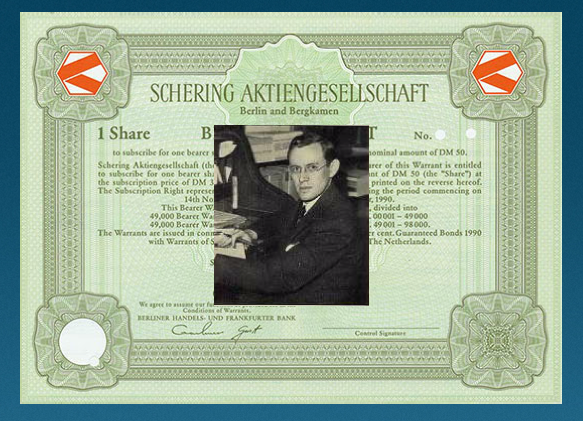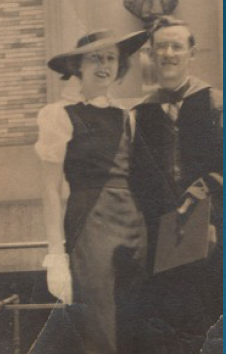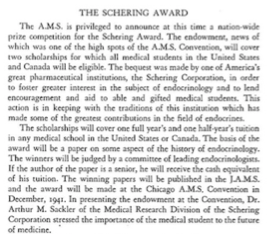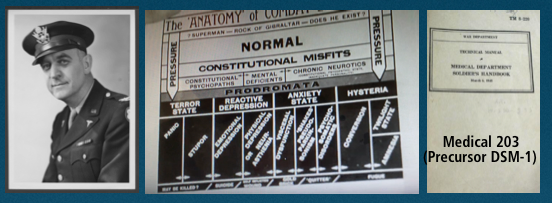The Real Arthur Sackler. Part 2: MIC Poster Boy.
Posted on | September 24, 2019 | Comments Off on The Real Arthur Sackler. Part 2: MIC Poster Boy.

Mike Magee
Series Note: This 5-Part Series will run from September 23rd to September 27, and then be available as a single document under Hcom Resources.It is based on original research in CODE BLUE: Inside the Medical-Industrial Complex.
In Part I of The Real Arthur Sackler, I reviewed his official narrative which had been carefully scrubbed over three decades by New York’s finest public relations experts. But the truth diverges dramatically from the varnished version, and reveals a rich kid who sets his sites early on becoming the marketing poster boy for a wildly profitable Medical-Industrial Complex (MIC).
Arthur Sackler was born in 1913, the son of immigrants, his father from the Ukraine, his mother from Poland. They lived in Brooklyn. By all accounts their son, who attended the famed Erasmus Hall High School, was both intelligent and industrious.

A statue of the school’s namesake was erected in 1930 and sits in the school’s courtyard. An accompanying inscription, which likely inspired the young Arthur, graduating that same year, read, “Desiderius Erasmus, the maintainer and restorer of the sciences and polite literature, the greatest man of his century, the excellent citizen who, through his immortal writings, acquired an everlasting fame.”

By 1937, (even while narratives suggest he was functioning as a significant source of financial support to parents, siblings, and self), he completed both college and medical school in record time, and married his well-to-do first wife, Else Finnich Jorgenson. Three years later, in 1940, after completing an internship at Lincoln Hospital, he departed clinical medicine, adjusting his career path and was already wealthy enough to begin to seriously collect art.

He was now a pharmaceutical managing director, and head of the Medical Research Division at Schering Corp., a American based subsidiary of German parent, Schering A.G., established in the early 1800s by the German apothecary Ernst Schering. Sackler’s American division was established in 1938 “in preparation for its assignment of supplying and holding the foreign markets of Schering A.G. for the duration of the anticipated hostilities”. Germany was on the march and FDR was preparing for war, and Schering wanted to protect its supply chain exports to the U.S.

Young Sackler’s role as head of the Medical Research Division included medical affairs. That year, on behalf of Schering Corp, he presented an endowment check at the Annual Convention of The Association of Medical Students. The funding was to fully support a new award program called “The Schering Award”, to encourage student interest in the burgeoning field of endocrinology – central to Schering current product line.
Two years later, the award and Schering Corp. were gone, seized by the US government with other “German interests”. It would be another ten years before the government released the 440,000 shares of Schering stock being held, and allowed the company to once again function independently.
Arthur used that decade well. With Schering gone, he joined the William Douglas MacAdams Advertising Agency in 1942, and by 1947 gained a controlling interest in the firm. At the same time, with a healthy understanding by now of medicinal chemistry, he witnessed a stream of over 1 million psychiatric casualties returning from WW II and inhabiting overflowing mental hospitals stateside, and decided psychiatry was the land of opportunity.

He enrolled in the New York residency program at Creedmore Mental Institution on Long Island. The specialty was getting a huge boost from the war effort. U.S. Army head of Psychiatry, William Menninger, was systematizing the treatment of “Shell Shock” including the liberal use of barbiturates. His playbook, Medical 203, would become the basis of DSM 1 in just a few years, and launch the medicalization and pharmacologic treatment of mental illness. Name it, then treat it.

By 1949, Arthur not only controlled his own Medical Advertising Agency and had completed his training, but had now established, with his two brothers, Mortimore and Ray, the Creedmore Institute of Psychobiological Studies. With access to 7000 plus in-patients, there was no shortage of human subjects. Experimenting with a variety of agents, including sex hormones and histamine, on patients with psychosis, Arthur and his kin began to churn out papers advancing their theories on the biologic basis of treatment for psychiatric illness, and publishing the same in home-made scientific journals which celebrated his brillance.

His business success was not mirrored in his personal life. By 1949, he had divorced his first wife (though secretly maintaining her as a hidden silent business partner), and married his second wife, Marietta Lutze, the third generation manager of the German Pharmaceutical firm, Dr. Kade. All the time, Arthur had been ramping up his art collecting, now focused heavily on Asian artifacts. And as luck would have it, he was flush with cash. The Antibiotic Era was about to come into full bloom.
Tomorrow: The Real Arthur Sackler. Part 3: Pfizer’s Agent of Record


